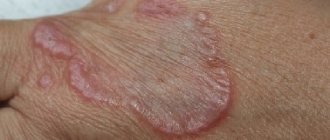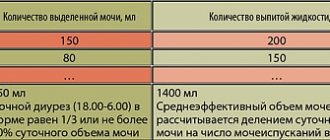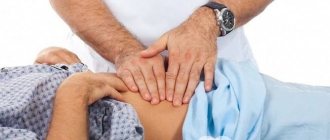Reactive arthritis poses a threat to the younger generation and can even affect infants. It is one of the acute spondyloarthropathies, i.e., it is an acute inflammatory process that spreads to the spine, ligaments, various organs and skin. Reactive arthritis mainly affects peripheral joints: knees, hips, necks, interphalangeal joints of the hands and feet, wrists and others. In rare cases, it can lead to inflammation of the aorta, kidneys, pleurisy, damage to the nervous system, even meningoencephalitis.
Reactive arthritis: causes
The disease is usually associated with post-infectious inflammation of tissues, less often with infection of the joint. The causes of reactive arthritis are very diverse. In most cases, the disease is caused by enterobacterial intestinal or chlamydial urogenital infections - for example, dysentery or chlamydia. Less commonly, mycoplasma and chlamydial infections of the respiratory tract, which are accompanied by pneumonia, bronchitis and other respiratory diseases. Even if the patient is cured and the acute phase of the underlying disease is over, the pathogen can remain in active form in the body’s cells. Parasitic causes of reactive arthritis are extremely rare.
The risk of developing arthritis after these diseases is, on average, 1-3.5%. Most often, men aged 20-40 years get sick; women get sick 10-20 times less often.
By the way, a predisposition to ReA can be determined through laboratory tests. Studies have shown that carriers of the HLA-B27 antigen are 50 times more susceptible to arthritis (65-95% of patients).
Diagnostics
In order to make a correct diagnosis, CELT specialists use a number of diagnostic tests. So, the following are mandatory:
- general blood and urine analysis;
- analysis for the detection of chlamydia and antibodies;
- HIV test.
In addition, synovial fluid analysis may be performed. As for instrumental studies, the following is used:
- radiography;
- echocardia (in the presence of pain in the heart).
Reactive arthritis: symptoms
Reactive arthritis can affect one joint, but is more often systemic in nature and affects 2 to 6 joints.
Most often, the disease manifests itself in the joints of the lower extremities. The episode begins acutely, with pain in the area of the affected cartilage, increased general body temperature and joint temperature, and fatigue. A dull aching pain is felt throughout the entire joint, intensifying at rest. At night, the joints begin to twist, upon awakening or changing the resting position, stiffness is observed, which is caused by swelling and goes away after a “warm-up” aimed at the outflow of fluid. Pain syndrome is observed with any movements, especially with a large amplitude, and also intensifies with palpation of the affected joint.
The large and small joints of the extremities begin to hurt first, while the fingers and toes gradually become deformed and swell due to the accumulation of exudate in the joint and swelling of the soft tissues. In severe cases of the disease and in its later stages, pain in the spine also occurs (approximately every 10th patient suffers from it), which indicates the destruction of the intervertebral discs and the inflammatory process in the adjacent tissues.
Appetite also worsens, body weight decreases, and lymph nodes enlarge (especially in the groin, neck, and armpits).
The first signs of reactive arthritis usually appear a month after the infection enters the body (for example, after sexual intercourse or an acute respiratory infection).
Clinical symptoms of reactive arthritis are:
- signs of arthritis are expressed asymmetrically;
- the occurrence of ulcers on the mucous membranes (eyes, mouth, genitals) and skin (often in the area of the feet, hands);
- inflammation and dystrophy of tendons, as well as places of attachment of ligaments and muscles (enthesitis and tensinitis);
- with concomitant intestinal infection, colitis is observed;
- the skin of patients often suffers from hyperkeratosis and keratoderma; when the crusts peel off, open wounds form and may become infected;
- Due to skin problems and local inflammation, the skin in the affected area acquires a purple tint, and the limbs resemble radishes.
The classic “triad” of reactive arthritis, also known as Reiter's disease, includes:
- urethritis, cervicitis, other inflammatory diseases of the genitourinary system (bacterial, viral, fungal or parasitic nature);
- conjunctivitis (from slight redness to severe eye pain and photophobia);
- damage to the mucous membranes and skin, sometimes even to the point of destruction of the nail plate.
At first, patients often confuse the skin symptoms of reactive arthritis with allergies or independent dermatitis. However, the main difference is the relative painlessness of the ulcers and the absence of itching. If there are keratinized papules, plaques and vesicles (rashes) around the nails, on the feet, or on the inside of the palms, the doctor will conduct an additional history or examination to rule out psoriatic arthritis. You need to understand that a patient can only have one Reiter's sign - for example, conjunctivitis occurs in 25% of patients, rashes in 12%, and oral ulcers and stomatitis in 10%.
It is also worth distinguishing reactive arthritis from infectious. With infectious arthritis, the infection enters the joint capsule along with blood or lymph. In reactive cases, as a rule, the pathogen is not present in the synovial fluid and membrane - even if a small amount of bacterial agents is noticeable during examination, there is no pus.
Features of nutrition during treatment and prevention of infectious arthritis
Therapeutic nutrition for arthritis of various types is aimed primarily at normalizing the immune response, as well as weakening inflammatory processes, in order to restore the range of motion of the affected joint.
Nutritional features depend on:
- stages of disease development;
- presence of concomitant diseases;
- severity of clinical manifestations.
Based on this, we can come to the conclusion that there is no single diet. However, there are a number of general principles for creating a diet, including:
- fractional meals;
- preference for certain types of culinary food processing (boiling/baking/steaming/stewing);
- food intake temperature – no more than 60°C;
- limiting salt and liquid intake;
- giving up bad habits;
- saturating the diet with vitamins.
How to treat reactive arthritis
Treatment of reactive arthritis is carried out in three areas:
- antibacterial therapy aimed at destroying the causative agent of the disease;
- relief of joint syndrome, restoration and preservation of joint functions;
- prevention or treatment of complications in case of protracted disease.
Symptomatic treatment is aimed at eliminating pain and local inflammation. If the examination did not reveal problems with the heart and kidneys, treatment of the disease is carried out on an outpatient basis, i.e. at home, following medical recommendations for reactive arthritis.
Treatment of reactive arthritis with medications
Treatment of reactive arthritis with drugs is based on the use of non-steroidal anti-inflammatory drugs and antibacterial therapy. Immunosuppressants can be used to relieve inflammation (only as prescribed by a doctor).
The choice of drugs is dictated by the degree of inflammation and the presence of visceral complications.
Topical agents (ointments, creams, alcohol-based gels) are, if necessary, combined with intra-articular injections of glucocorticosteroid drugs (GCC) and analgesics. For systemic inflammation, GCC is prescribed orally or by injection. Drug treatment of small joints is carried out using applications with dimexide. When the disease is chronic, the attending physician must choose a basic drug. With constant exacerbation, treatment can be continuous.
Treatment of ulcers on the skin and mucous membranes, conjunctivitis is symptomatic.
Non-drug treatment of reactive arthritis
Non-drug treatment is auxiliary in nature and is used in addition to pharmacotherapy. Its main task is to maintain joint mobility and prevent the formation of contractures.
For reactive arthritis, medicinal phonophoresis, diadynamic therapy, ultrasound therapy, magnetic and laser therapy are used. If other types of physiotherapy are contraindicated for the patient, treatment with leeches can be used.
During the period of remission, massage and physical therapy with an instructor are recommended.
Varieties
Today, it is customary to distinguish several types of secondary diseases. Arthropathy of the knee, hip, elbow, etc. can be:
- reactive - occurs against the background of a specific tissue reaction to the development of systemic pathologies of the body. Occurs in leukemia and endocrine system disorders;
- dystrophic - progression is due to insufficient nutrition of cartilage tissue. Occurs in people over 55 years of age when natural disorders affecting the functioning of the entire body are detected;
- pyrophosphoric (chodrocalcinosis) - has a connection with metabolic disorders, namely, the exchange of salts and calcium in the tissues of the human body. Often, the provocateurs of this type of illness are injuries to large joints;
- allergic – provoked by allergic reactions;
- psoriatic – occurs with psoriasis;
- idiopathic - defined in a situation where it is impossible to establish reliable causes for the development of a pathological condition of a secondary type;
- hereditary form - transmitted at the genetic level, established on the basis of the collected anamnesis.
Prognosis for reactive arthritis
The duration of reactive arthritis is short - from several days to several weeks. With properly selected and timely treatment, the prognosis is favorable, it is possible to maintain the condition of the joints and organs that was observed before the disease.
Acute or subacute reactive arthritis due to respiratory infection (ARI, ARVI) can be quickly cured with antibiotics and NSAIDs. In its chronic form, the disease can cause acquired defects of the cardiovascular and nervous systems, and provoke diseases of the kidneys, lungs and eyes.
Complications of reactive arthritis are uncommon and are characteristic of the aggressive course of the disease in genetically predisposed patients. Most often, erosive joint damage, foot deformity, relapses or chronicity of ReA occur. Sometimes there is aortic valve insufficiency, cataracts and other complications that can be avoided by following clinical recommendations for reactive arthritis.
Surgical method of treatment
In a situation where complex therapy is unable to cope with the existing degree of damage to the joint, radical methods come to the rescue, including surgery.
Surgical treatment of arthritis is used only in severe cases. Among the types of surgical intervention there are such measures as:
- arthroscopy
is a low-traumatic operation that involves the removal of bone processes; - endoprosthetics
– replacement of articular elements with implants; - arthrodesis
– absolute fixation of the joint; - osteotomy
- excision of part of the bone tissue of the affected joint in order to reduce pressure on it; - arthroplasty
is a complete replacement of the affected joint.
Clinical guidelines for reactive arthritis
During the disease, constant supervision by a rheumatologist is necessary. Adequate treatment of previous infection is the main preventive tool against reactive arthritis and its chronicity.
It is also recommended to maintain a hygienic regime, a healthy lifestyle, and immunogenetic counseling. Prevention of relapses requires early consultation with a doctor regarding symptoms and treatment of reactive arthritis, and careful adherence to medical recommendations.
Risk factors for joint arthropathy
There are certain factors that indicate an increased risk of secondary pathological disease. These include:
- autoimmune diseases;
- hemophilia;
- excessive stress on the joints;
- genetic predisposition;
- alcohol abuse;
- tendency to allergic reactions;
- chlamydia infection;
- impaired metabolism;
- accumulation of uric acid in joint tissues.
Reactive arthritis in children
Non-purulent reactive arthritis is one of the most common rheumatic diseases among children and adolescents, especially males. According to epidemiological studies, 1 child out of 1000 suffers from ReA, and of the total number of patients with rheumatic symptoms, 56% suffer from this disease. Therefore, every parent should learn the causes, symptoms and treatment of reactive arthritis in children in a timely manner.
Causes of reactive arthritis in children
In 4 out of 5 cases, reactive arthritis in children develops from chlamydial infection. Infection is possible through household contact with patients and carriers of infections - people, pets, birds, as well as through airborne droplets, contact and airborne dust. Often, chlamydial infection is congenital - a child becomes infected while passing through the birth canal of a sick mother, in whom the disease can be completely asymptomatic.
Reactive arthritis caused by intestinal infections is especially common among children aged 1-3 years. It occurs as a result of yersiniosis, salmonellosis, shigellosis and campylobacteriosis - a child can get all these diseases when he crawls, puts unwashed hands and toys into his mouth. Arthritis due to nasopharyngeal infection has no age preference, but is relatively rare.
Symptoms of reactive arthritis in children
As a rule, there are no symptoms of a previous infection at the time of detection of ReA. Urogenital infections (such as chlamydia) may not manifest themselves at all in about 40% of cases. For this reason, the following symptoms are significant in children:
- subfebrile body temperature from 37.1 to 38°C;
- fever;
- decreased appetite;
- general weakness and fatigue;
- sudden onset of pain in the joints, which is accompanied by swelling;
- pain in the buttocks, lower back, feet;
- conjunctivitis and other lesions of the eyes and mucous membranes;
- rash in the affected joints;
- the child complains of pain in the fingers, limps, tries to stroke or protect the sore joints.
2-6 weeks before the onset of rheumatic symptoms, you may experience:
- difficulty urinating;
- symptoms of vulvitis, balanitis;
- itching and burning in the perineal area;
- anxiety;
- diarrhea.
The already mentioned Reiter's syndrome can be observed in children for several months, and if left untreated, it can develop into juvenile rheumatoid arthritis.
Treatment of reactive arthritis in children
The selection of treatment for a child begins after collecting a family history and conducting laboratory diagnostics (mainly clinical analysis and biochemical blood tests). The basis of therapy is broad-spectrum antibiotics, which can be prescribed even before identification of the infectious agent (1-2 courses with a break of 5-7 days). For postenterocolitic arthritis, antibiotics may not be prescribed. Also, treatment of reactive arthritis in children includes symptomatic treatment of joint syndrome - pain relief, relief of inflammation, improvement of fluid outflow from adjacent tissues, restoration of mobility in the joint, correction of immune reactions. For this purpose, both general and local therapy (intra-articular injections of glucocorticosteroids), the use of anti-inflammatory ointments, creams and gels are used. Clinical recommendations for reactive arthritis in children and the drugs of choice are determined taking into account age, the causative agent of the disease, the severity of the disease and individual effectiveness. It is important to keep the room clean, regularly ventilate living rooms, and teach the child the rules of personal hygiene.
Don't get sick and take care of your loved ones!
You may be interested in:
Osteochondrosis of the hip joint: what is it and how to cure it? Gouty arthritis Osteoarthritis of the ankle joint Arthrosis of the wrist joint Osteoarthritis of the knee joint
General information
Arthropathy is a secondary lesion that occurs against the background of concomitant non-rheumatic diseases. Activation of pathological processes can occur in diseases of various etiologies.
The key manifestation of arthropathy is painful conditions without affecting the shape and functionality of the joint. In some cases, reactive arthritis occurs.
Localization is in the joints mainly of the lower extremities, therefore in medical practice arthropathy of the knee joint is most often diagnosed. The manifestation is inflammation, swelling, as well as rapid fatigue and difficulty in making movements.
It is important to note that the key difference between the condition under consideration is the dependence of the existing syndrome on the course of the “main” pathological process.
Severe pathologies develop extremely rarely. With a competent approach to eliminating the underlying disease, arthropathic symptoms are significantly reduced or completely disappear.
What are the prognosis and can it be prevented?
If arthropathy is left untreated, the pathology progresses over time. The joint may become infected, and mobility will become increasingly limited, leading to immobility and disability. All this can be avoided if you strictly follow the doctor’s recommendations and do not experiment with self-medication.
Since arthropathy is secondary, in order to prevent it, it is necessary to take preventive measures to prevent the development of other diseases. And if they already exist, then treat them in a timely manner. It never hurts to maintain an adequate level of physical activity, eat right, monitor your body weight and give up bad habits.
To minimize the risks of any joint diseases, be it arthropathy, coxarthrosis or salt deposition due to gout, it is necessary to undergo regular preventive examinations, and not to ignore alarming symptoms. Your health is in your hands!
When is it time to seek medical help?
Despite the extensive symptomatic picture and seemingly obvious signs of a secondary disease, identifying it in the initial stages is not an easy task.
Only over time does a feeling of a sharp deterioration in health begin, which makes it possible to track vivid symptoms.
You should visit a traumatologist or orthopedist in a situation where:
- swelling of the periarticular tissues is observed;
- body temperature rises “unreasonably”;
- there is a feeling of extreme fatigue, weakness is present;
- lymph nodes increase in size;
- movements are severely limited or completely impossible.
Self-medication in such a situation is not the best solution. Wasting time reduces your chances of recovery.









